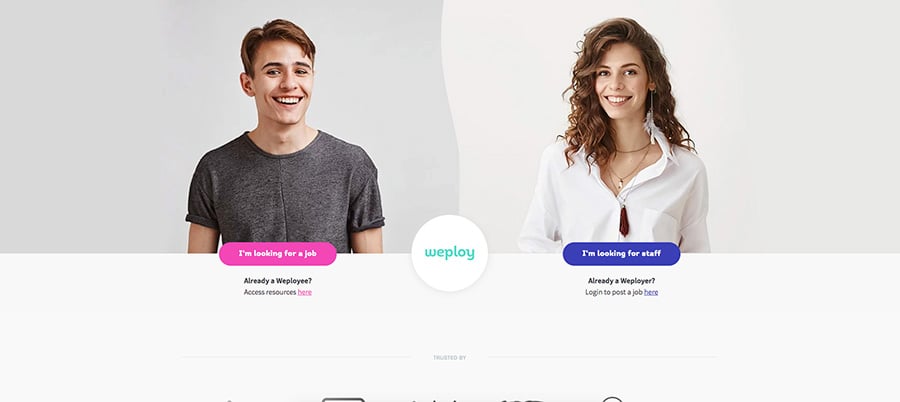Which do you think is more important with your content marketing strategy: authority or authenticity? Funnily enough, it’s a trick question! Crafting excellent marketing involves a serious balancing act, and as content marketers we are required to look at both authority and authenticity to build the stable of resources that our consumers are searching for.
If you’re looking to build trust in your brand, the first step involves considering your industry and the kind of opinions and perspectives you want to project to the world. Authority is simply an old fashioned way of building a reputation within your vertical. You may want your reputation to say:
- “I know what I’m doing”
- “I know how to alleviate your problems”
- “I want to educate and empower you”
Though authority might have the persuasive power to get some customers through the door, and signing a cheque or two, it won’t keep them hanging around long. It’s authenticity, the quality of being genuine and relatable, that’s essential to help your business find and nurture loyal customers. These are the kind of customers who’ll become evangelists for your business and bring plenty of their friends into the mix along the way, because of how much they trust you and believe in your services!
So when you’re sitting down for your next marketing meeting, consider the following for conveying authenticity and establishing authority.
How do we create branded content that builds authenticity and establishes authority?
Act Human

Image credit: The Next Web
Proving you’re human means more than just proving you’re not a robot. It involves demonstrating to your customers that behind every product and every piece of communication is another person who believes in it.
The truth is:
“Humans don’t buy from companies; humans buy from humans, so solving for humans is every smart company’s primary goal”
— HubSpot cofounder Dharmesh Shah
Showing the human side of your business allows your customers to connect with whom they see as like minded individuals, and allow them to not only buy something, but buy into something — a community, a movement, a tribe.
Here are the questions you need to ask in your next marketing meeting:
- Do you send emails with a no reply address?
- Do you make it difficult for a customer to reach a real person?
- Do you send out automated replies to all your social media posts?
- Do your social media profiles feature sporadic activity?
- Are your company values unclear to new customers?
A small shift in your interactions with visitors and customers makes all the difference in establishing an authentic brand. Turn all those “don'ts” into opportunity by implementing ideas like:
- Change the no reply address to something users can respond to.
- Add a specific call to action at the bottom of your email, encouraging a response.
- Assign someone in your team to be responsible for answering emails like these.
- Switch off the automation, in cases where it might seem like you don’t care. Especially in cases where a personal message is expected, like if someone lodges a complaint.
- Kickstart a consistent social media presence using a trusty editorial calendar. Start with a low frequency of high quality posts.
- Try creating a content series focused on company culture. Establish your company values, interview staff members and showcase your team’s fun side projects and passions.
Align your business values with buyer personas
Buyer personas are the end and the beginning of every marketing campaign. The beginning because that’s how you know your efforts aren’t in vain and you’re targeting your campaigns to real people with specific pain points and goals. The end because that’s how you evaluate the success of your campaigns, in relation to how much your content resonates with particular groups of people (your ideal customers!).
Regular reevaluation of your buyer personas is crucial. Your buyer personas are living and breathing documents mapping out who your ideal customers are. Invest time as a team in exploring and documenting all your personas.
With rock solid personas, your branded content can better speak to their language of priorities and pain points.
Consider the working mums trying to decide which orthodontist to choose for their teenage daughters. How will branded content positioned from other working mums within the practice generate a greater level of empathy and relate-ability?
- Authority pieces might include "How to find the right orthodontist for you" OR "The truth behind treatment times: how long will braces really take?"
- Authenticity pieces might include interviews with happy former customers OR tips for helping your kids through their teeth straightening solutions, from the perspective of a mum
Consider the commercial painters marketing to local businesses. How will branded content demonstrating their experience as an established locally owned business appeal to other local businesses looking for contractors they can trust?
- Authority pieces might include What we’ve learnt from X years as a local business OR showcases of their largest projects.
- Authenticity pieces might include interviews with the owner about a day in the life OR an inspirational piece on why their company supports particular local charities.
Effective branded content begins with your buyer personas, so make sure they’re rock solid and based on data and interviews with real customers.
Find a cause
Finding and supporting a cause that resonates with your company is important for two reasons:
Firstly, we’re human. That means our emotions are closely tied to our decision making process. Research shows people love to consume and share content that is humorous, informative and for social good. The studies reveal an “overwhelming 36% of those surveyed say they mainly share content to promote a cause or issue they feel strongly about”. With the level of content oversaturation online, pursuing the balance of humorous, informative and socially responsible content is a good strategy to try.
Secondly, we’re human. That means we like buying from other humans. Brands that are open and vocal about a specific cause (and continue to do so whether it’s trending or not) builds a connection with other consumers who share those concerns. Success in business can also be a chance to build a better world — and we all want that!
Offer value and insight
It’s the inbound marketing mantra:
- Give value before asking for it.
- Empower rather than manipulate.
- Enrich rather interrupt their day.
The secret to building trust in your brand is to simply provide content that interests, informs and empowers your customers. The idea is to draw visitors to your website and keep them coming back because they value the informative content you bring to the table. You’re therefore drawing them further down your funnel with great content they love!
For businesses, this means talking about more than your specific vertical and exploring broader issues that your personas will be passionate about. Forget product centric, it’s persona centric.
Over to you
So how do we build authenticity and relatability? We act human. We behave in a way that aligns with our key business attributes, and balance that with what our personas want to see from us. We find a cause that actually matters to us and we support that, not just when it's trending. We choose to align ourselves with subjects from the broader realm of our industry that our customers want to know about too. And we use all of that to offer value and education to our tribe and create a community around our beliefs.
At the end of the day, businesses with a strong authentic and authoritative reputation prioritise community, and their communities love them for it. While you won’t gain loyal followers from a day’s worth of branded content efforts, you’re ultimately investing in some killer long term gains.
If you’re ready to roll out some killer branded content, then jump straight into the Content Planner below, to give you that birds eye view on your content strategy.










